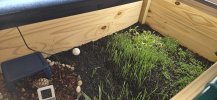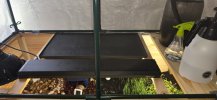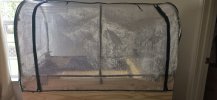Babysmallz93
New Member
Hello. I am back with more questions. I adjusted my radiant heat panel so that my closed chamber enclosure will not go above 85°f at night as per the helpful advice I have received on this forum about my night temp being too high. With this adjustment the coldest part of the enclosure can get anywhere between 77-79°. It's just the very edge of the enclosure on the far right side. Everything else is above 80° at night. My question is is that OK or do I need to figure out something to make that cold part warmer? Since I do have a closed chamber I am confused as to why the heat isn't stabilizing throughout the entire enclosure.



